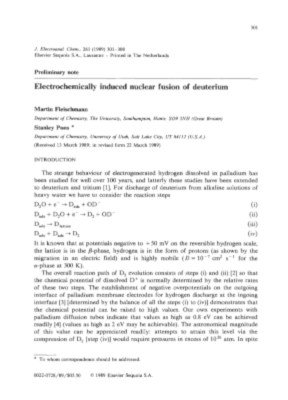In the iconic 1990s TV series The X Files, David Duchovny’s FBI agent-paranormal investigator Fox Mulder has a poster on his office wall. It shows a flying saucer in flight, with the slogan “I Want To Believe”. It perfectly sums up the dilemma the character faces. And while I’m guessing that only a few Hackaday readers have gone down the full lizard-people rabbit hole, wanting to believe is probably something that a lot of us who love sci-fi understand. It would be a fascinating event for science if a real extraterrestrial craft would show up, so of course we want to believe to some extent, even if we’re not seriously expecting it to appear in a Midwestern cornfield and break out the probes any time soon.
By All Means Believe. But Don’t Wreck Your Career

Outside the realm of TV drama and science fiction it’s a sentiment that also applies in more credible situations. Back at the end of the 1980s for example when so-called cold fusion became a global story it seemed as though we might be on the verge of the Holy Grail of clean energy breakthroughs. Sadly we never got our Mr. Fusion to power our DeLorean, and the scientific proof was revealed to be on very weak foundations. The careers of the two researchers involved were irreparably damaged, and the entire field became a byword for junk science. A more recently story in a similar vein is the EM drive, a theoretical reactionless force generator that was promising enough at one point that even NASA performed some research on it. Sadly there were no magic engines forthcoming, so while it was worth reporting on the initial excitement, we’re guessing the story won’t come back.
When evaluating a scientific or technical breakthrough that seems as miraculous as it is unexpected then, of course we all want to believe. We evaluate based on the information we have in front of us though, and we all have a credibility pyramid. There’s nothing wrong with having an interest in fields that are more hope than delivery, indeed almost every technology that powers our world will at some time have to overcome skepticism in its gestation period. Perhaps it’s best to say that it’s okay to have hope, but hope shouldn’t override our scrutiny of the proof. Of course I want a perpetual motion machine, who wouldn’t, but as a fictional engineer once allegedly said, “Ye cannae change the laws of physics”. Continue reading “I Want To Believe: How To Make Technology Value Judgements”


















